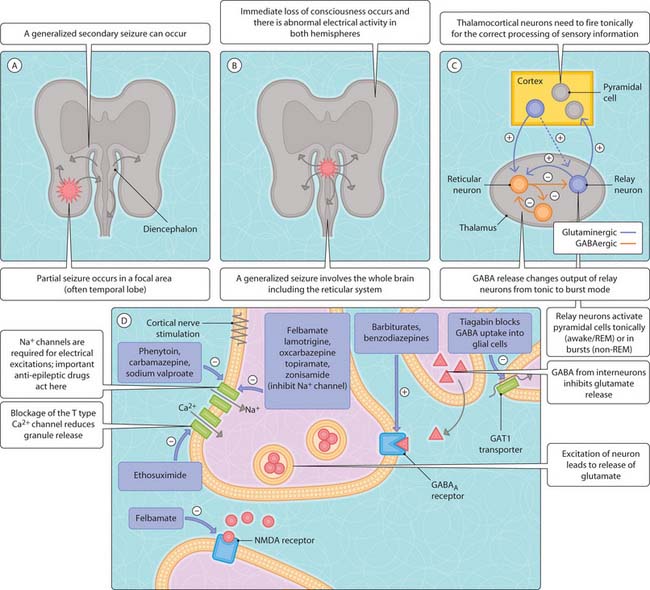38 Antiseizure agents and epilepsy
Epilepsy is characterized by seizures broadly classified as generalized or partial (localized) syndromes (Fig. 3.38.1). The simultaneous activation of both hemispheres characterize generalized epilepsy, which is manifested as a convulsive seizure with periods of muscle rigidity (tonic) followed by jerking of the body (clonic), commonly referred to as a tonic–clonic (or grand mal) seizure. In childhood absence epilepsy, subjects frequently lose consciousness for brief moments without recollection of the event and are non-convulsive. The molecular basis of the generalized syndromes is not fully understood, although it may involve mutations in various ion channels (sodium, GABAA) and an abnormality in the thalamic relay sensory unit (thalamocortical pathway) resulting in neuronal hyperexcitability. Partial syndromes are most common in adults, with the seizure beginning in a particular location (e.g. temporal lobe as a result of a stroke) and spreading throughout the brain. Temporal lobe seizures are characterized by hallucination, confusion and loss of awareness. If the focus is localized in the motor cortex, then tonic–clonic seizures can result.
Drug treatment
The major aim of treatment is to reduce neuronal hyperexcitability and this is achieved by targeting GABAA, sodium and calcium channels (Fig. 3.38.1D).
Stay updated, free articles. Join our Telegram channel

Full access? Get Clinical Tree





